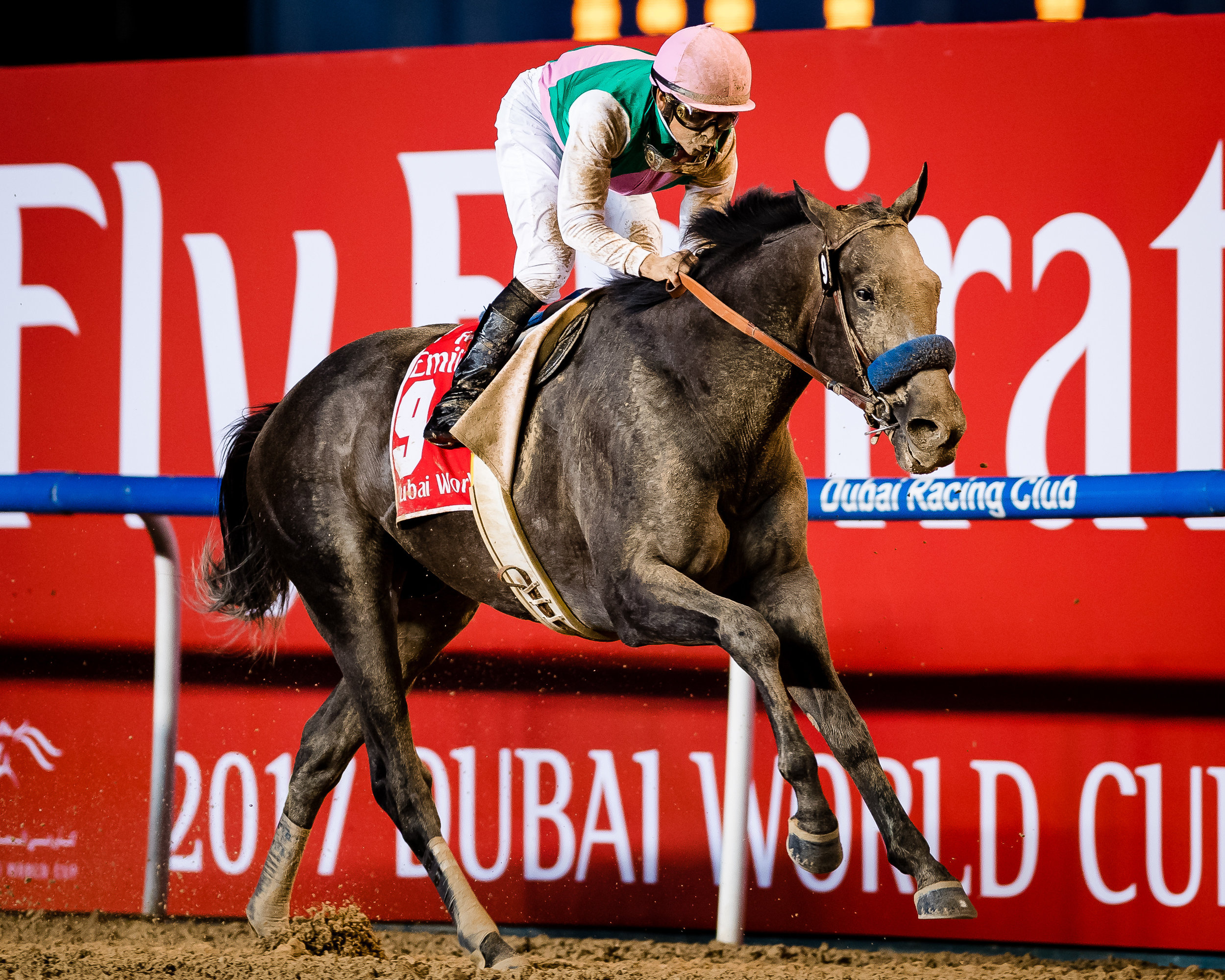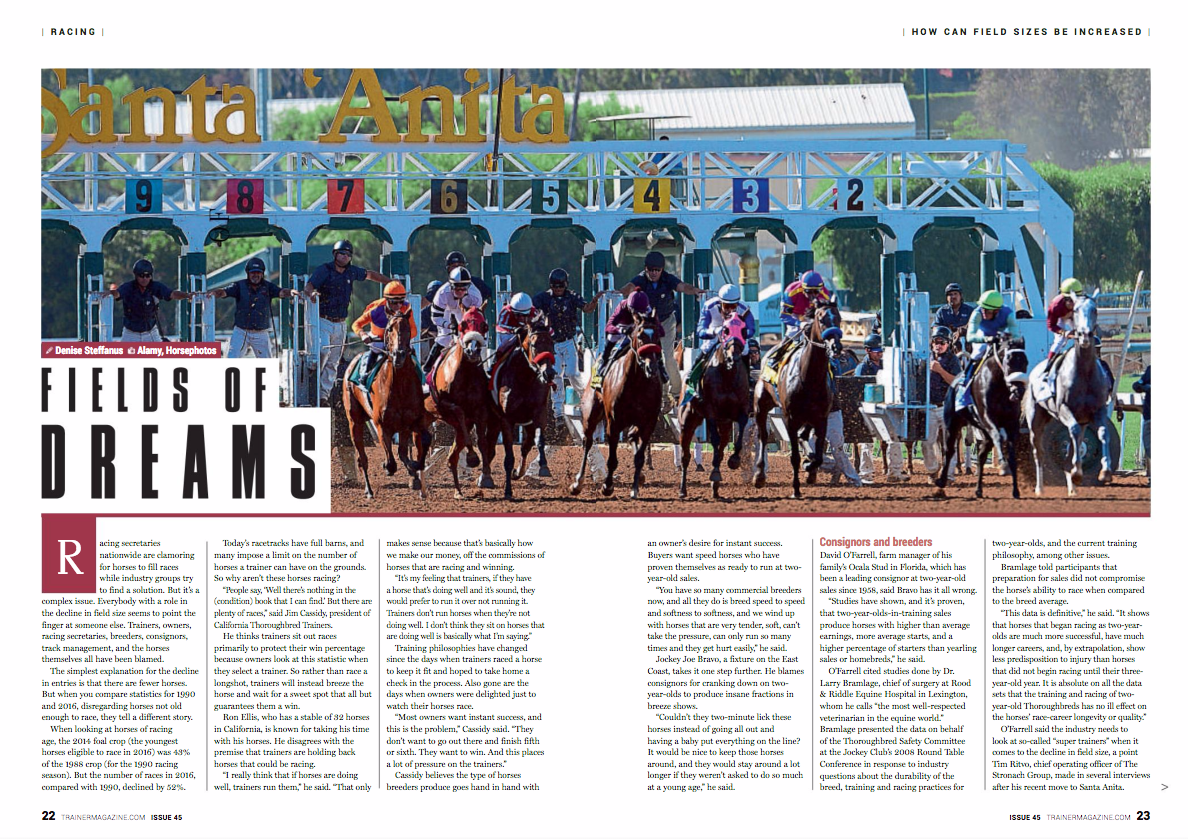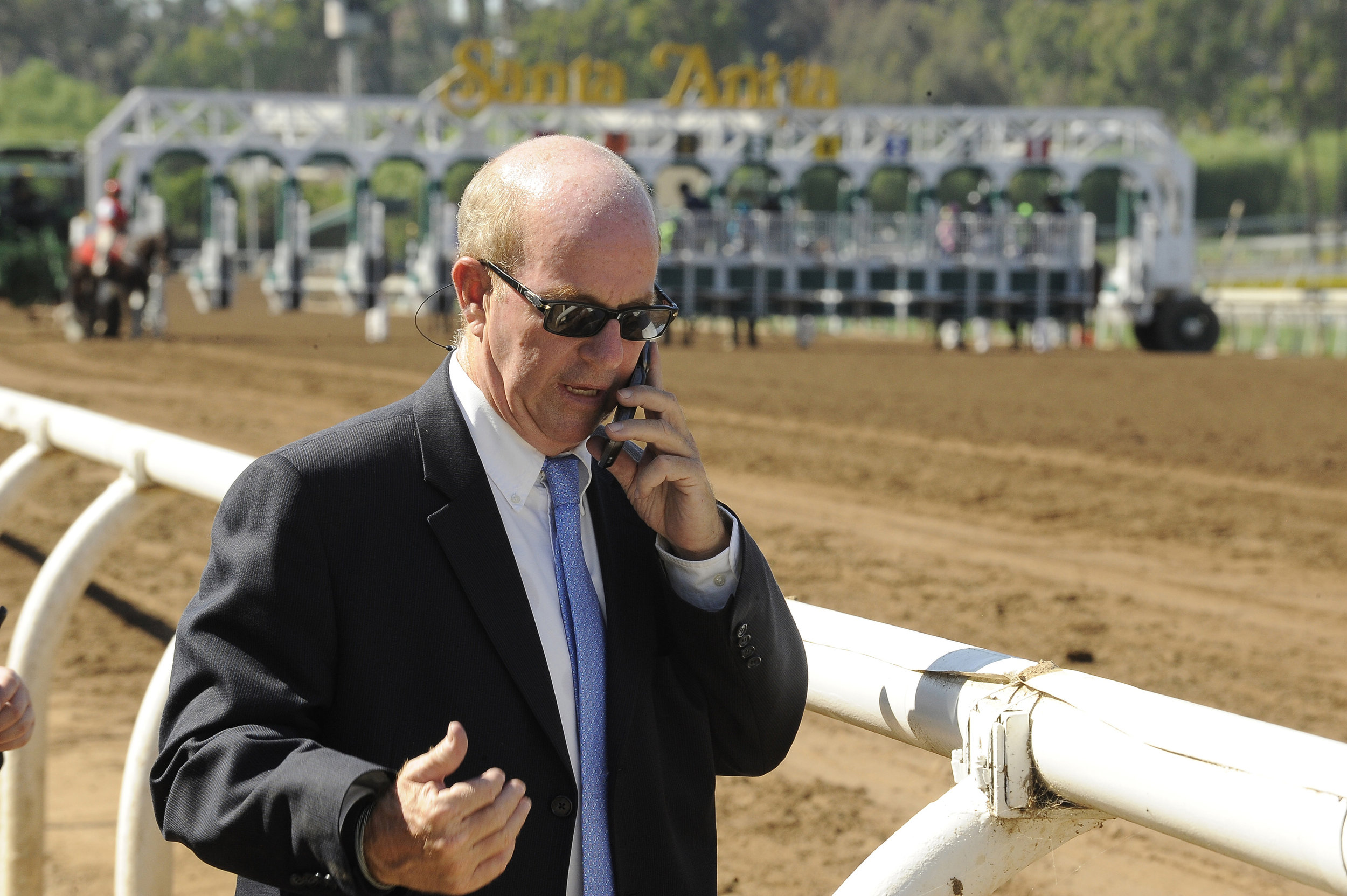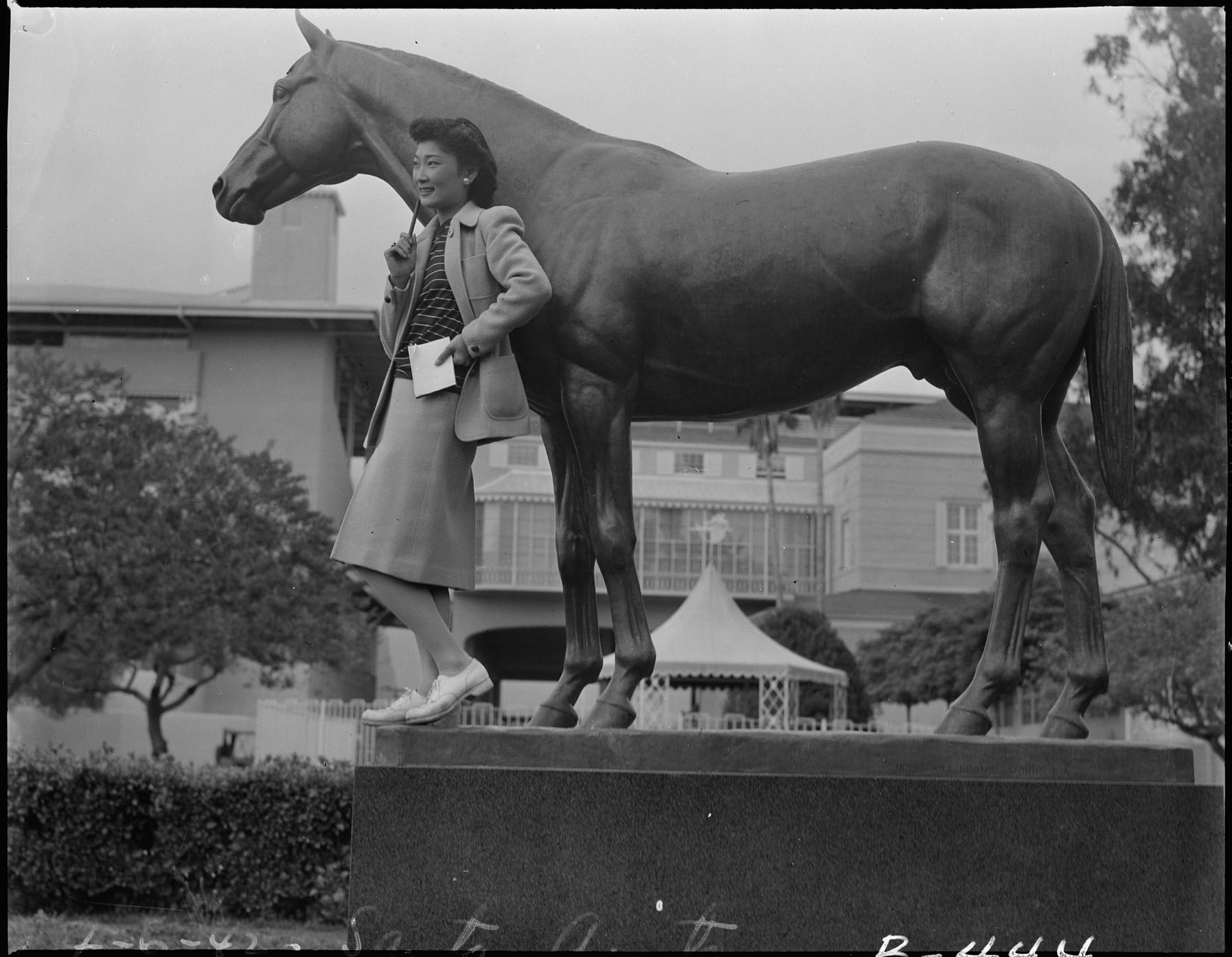Practical Tips for International Travels
/By Denise Steffanus
Horses thrive on a daily routine and do their best when racing in a familiar environment, like a sports team with home-court advantage. But more and more American trainers are trying their hand at racing abroad, in places where racing is very different from what their horses are accustomed to.
Racehorses in Europe don't live and train on the racetrack. They are stabled at training yards, similar to a trainer's private farm in America. Riders hack the horses to grass gallops, sometimes through the nearby town, to get their daily exercise. It is a relaxing, pastoral setting.
When the horses head to the races, they are vanned from the training yard to the racetrack. The disadvantage for an American horse racing for the first time at a European racecourse is it doesn't have the opportunity to train over the track. So on race day, the horse finds itself in strange surroundings without the security of a lead pony, which are not customary in European racing.
Eoin Harty is a fifth-generation Irish trainer now based in California. Under his tutelage, Bill Casner's Well Armed dominated the Group 1 Dubai World Cup in 2009, winning by 14 lengths, the largest margin in the race's history.
Harty described the scene at England's famed Newmarket.
"The town is just basically around different training establishments," he said. "When you go to the track, you might be driving through the town and there's 50 horses walking on the street beside you, and I mean literally walking on the street. Then they just turn off and they go gallop up a hill somewhere. Then they walk back down through the middle of town and go back to their stalls. It takes a little bit of getting used to."
Racetrack configurations
Racetracks in America differ greatly from those in Europe. Here, horses travel counterclockwise on an oval, usually with a dirt surface that the track crew diligently works to keep as flat and even as possible. Turf courses are located inside the dirt tracks, so they are shorter with tighter turns. In Europe, horses race both clockwise and counterclockwise, primarily on turf, traveling up and down grades, and not necessarily in an oval.
England's racecourses are the most interesting. At Goodwood Racecourse in Chichester, the straightaway leads into a loop with sharp turns on a severely undulating surface that sends the horses back over the ground they traversed on the way out. Windsor Racecourse in Berkshire is a figure eight, with horses negotiating both right and left turns. Epsom Downs in Surrey also has right and left turns and a steep downhill turn. At Ascot, some races, such as the Group 1 Queen Anne Stakes, are contested over a straight mile course.
Goodwood
"The hardest thing for me has been dealing with the straightaway, which is such a different race," said trainer Graham Motion, who grew up in Newmarket and apprenticed with Jonathan Pease in Chantilly, France, before coming to the United States. "It's more figuring out the idiosyncrasies of how the race should be run. Because you can't really teach a horse to run straight. It's something they're going to have to adjust to."
Find a local trainer
Harty said American horses tend to get mentally stressed in this strange environment. The way to solve the problem, he said, is to arrive a few weeks earlier and have a local trainer assimilate the horses into his own yard's string so they can train on the same gallops and become accustomed to the local racing environment.
Trainer Art Sherman did exactly that when California Chrome's connections decided to send the horse to Royal Ascot after his second-place finish in the 2015 Dubai World Cup.
"I wasn't familiar with how they train in Newmarket, up and down those hills and different courses," Sherman said. "So I thought it would be better off for the horse to be with somebody who knew everything going on in that area."
California Chrome was placed with Newmarket trainer Rae Guest, but Sherman remained his trainer of record. Guest was tasked with introducing the American Horse of the Year to running clockwise as he prepared for the Group 1 Prince of Wales's Stakes.
"You're not going to go there cold turkey and have them go the wrong way and think they're going to run their best race," Sherman said. "Another factor of going the opposite way is they're going to be on a lead they're not used to running on. That's why you need to train them that [direction] for that type of turn, going from one lead to the other."
Unfortunately, a bruised foot knocked California Chrome out of the race. Sherman visited the horse and said, "He was not a happy camper." His grueling two-year campaign had caught up with him, so California Chrome's connections brought him home for a three-month turnout at Taylor Made Farm in Kentucky.
Trainer Ken McPeek has raced at Ascot and Epsom. In 2004, his Hard Buck finished second in the Group 1 King George VI and Queen Elizabeth Stakes at Ascot. When he built his Magdalena Farm in Lexington, he installed a two-mile European turf gallop up and down the Kentucky hills.
"We train them right-handed and left-handed on gallops here on my farm to prepare them," he said. "If they're going to run at Ascot, we train them right-handed every day. And if they're going to run at Epsom, they go left. And they also get a chance to gallop the hills."
Trainers at the racetrack are not as fortunate.
"I don't know of any track in the States where you can do that," Harty said. "Maybe the racetrack that you're training at would work with you and give you 10 minutes at the end of the day to gallop the wrong way."
Take a Pony
Getting a horse the distance to the starting gate without incident is Motion's concern.
"It's a very free gallop down to the start of the race," he said. "Normally, for the mile at Ascot, the start is a mile away. So you have to gallop a mile down to the start the wrong way up the racetrack. So that can be an issue. Last year McPeek's horse got loose going down to the start."
Daddys Lil Darling, Epsom
Motion was talking about Daddys Lil Darling, who was loping toward the start of last year's Group 1 Epsom Oaks with nine other horses when a loud clap of thunder startled her. The filly ran off with rider Olivier Peslier, eventually parting company with him and running loose until she was caught and scratched from the race.
“I can’t tell you why or how that happened, though I was initially kicking myself that I should have had a pony with her,” McPeek told the Daily Racing Form after the incident.
Lead ponies aren't prohibited in Europe. Trainers just rarely use them.
"Our horses, when they go over there, need that security blanket," Harty said. "If you look at their horses, they send two-year-olds to three different racetracks and three starts and they're in front of a crowd and it doesn't seem to bother them. So I think it's just a different kind of horse with a different kind of upbringing, and that's why they don't use ponies."
A trainer can make a request in advance for permission to use a pony, but has to supply it himself. That often means shipping it to Europe with his other horses.
To further add to the horse's comfort, most trainers take their key personnel with them. Sherman took California Chrome's groom, Raul Rodriguez, and his exercise rider, Dihigi Gladney, to Dubai. Both times, the horse’s regular jockey, Victor Espinoza, was aboard.
Riders up
In the history of the Dubai World Cup, American trainers always have taken the horse's regular jockey with them. Notably, Baffert named Chantal Sutherland-Kruse to ride Game On Dude in the 2012 edition. She is the only female jockey to compete in the auspicious race on United Arab Emirates soil.
Hall of Fame trainer Steve Asmussen said, "With that caliber of horse it would be insulting not to continue to ride who has helped you get there."
In 2008, Asmussen teamed Curlin with Robby Albarado for the win, and Gun Runner had Florent Geroux up for their second-place finish behind Arrogate in 2017.
In Europe, Wesley Ward primarily taps the jockeys with whom he has had the most success in the U.S., among them John Velazquez, Joel Rosario, and Espinoza. Recently, Ward has teamed up over there with champion jockey Frankie Dettori.
"He seems to be able to ride anywhere in the world and adapt to certain situations," Ward said. "He has, in fact, won certain races that I think an American rider or a rider from there wouldn't win, just because he's a phenomenal rider."
Ward was the first American trainer to win a race at Royal Ascot when his Strike the Tiger, with Velazquez in the irons, took the Windsor Castle Stakes by a neck in 2009. Ward returns every year to England and France with a string of horses that rack up impressive wins.
He begins preparing his horses for the midsummer Ascot meet around the first of the year, with a winter break to freshen them. His goal is to give the horses one or two well-spaced prep races in the U.S. before shipping them to England.
"We give them ample time to recover and ample time from their last start here to go there to prepare for those starts. So, essentially, we are running very fresh horses on the day, not tired horses," he said.
Logistics of the trip…
TO READ MORE —
BUY THIS ISSUE IN PRINT OR DOWNLOAD -
Breeders’ Cup 2018, issue 47 (PRINT)
$6.95
Breeders’ Cup 2018, issue 47 (DOWNLOAD)
$3.99
WHY NOT SUBSCRIBE?
DON'T MISS OUT AND SUBSCRIBE TO RECEIVE THE NEXT FOUR ISSUES!
Print & Online Subscription
$24.95



























